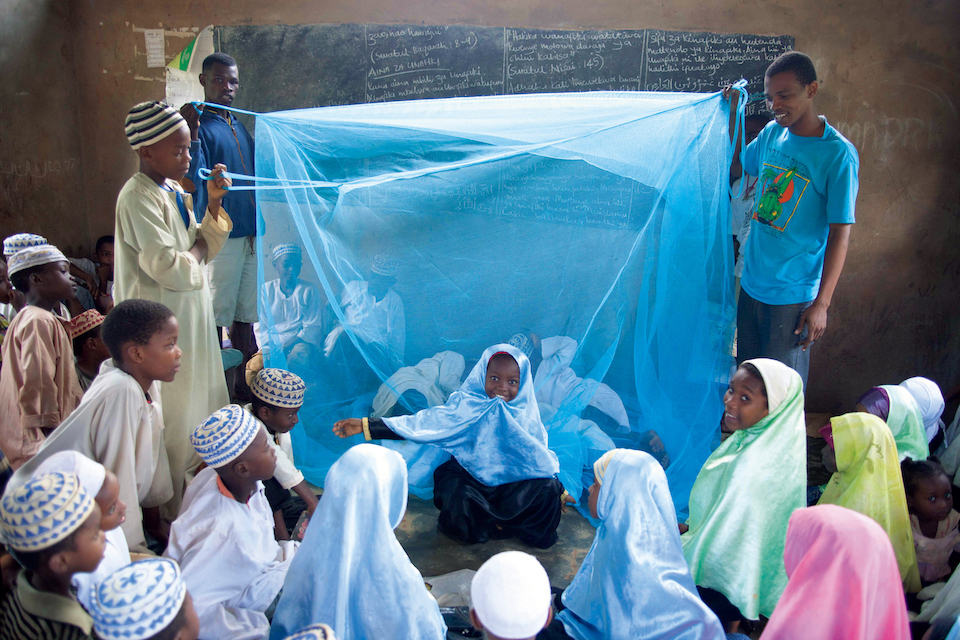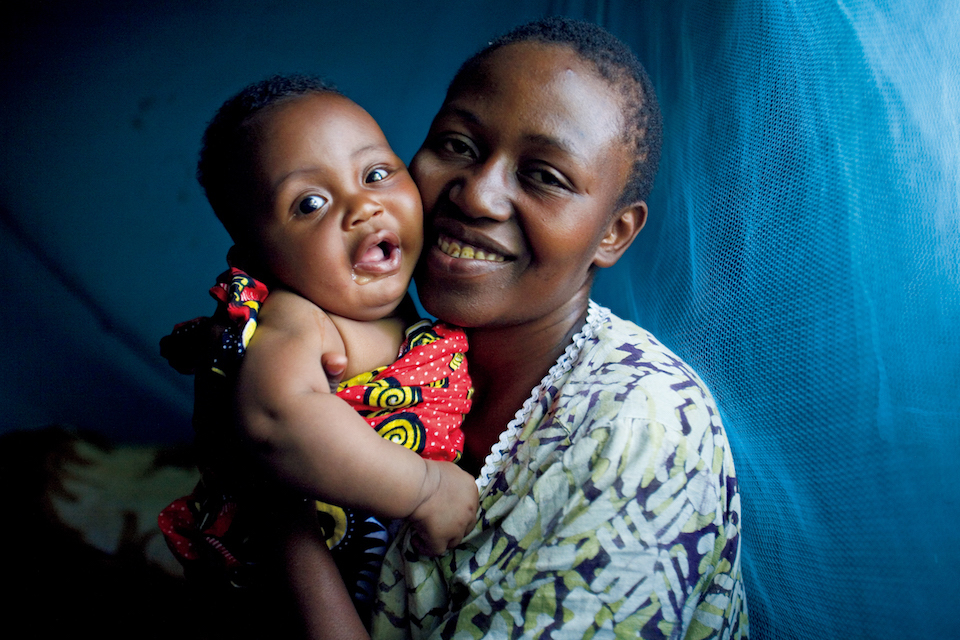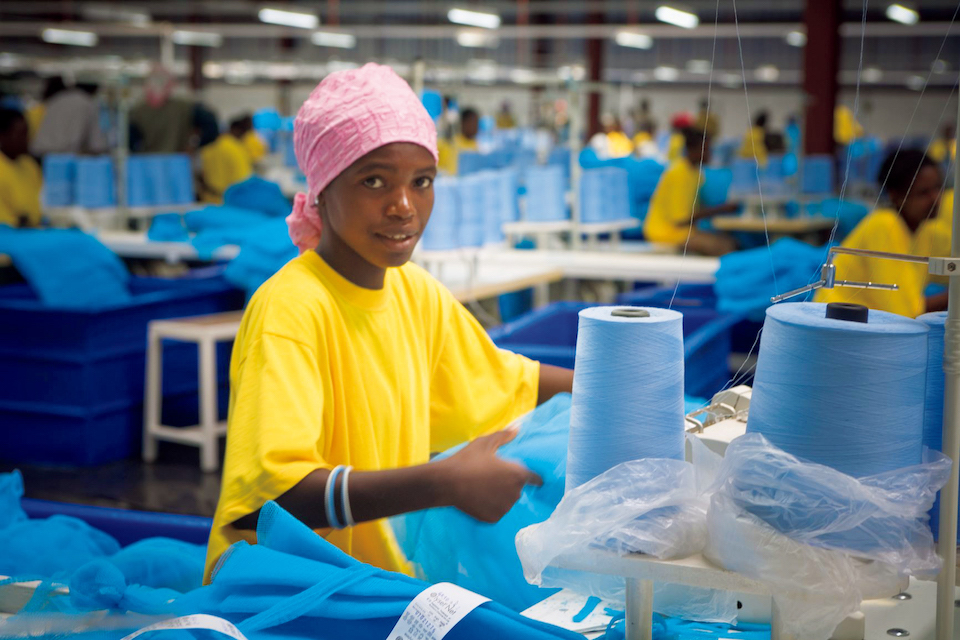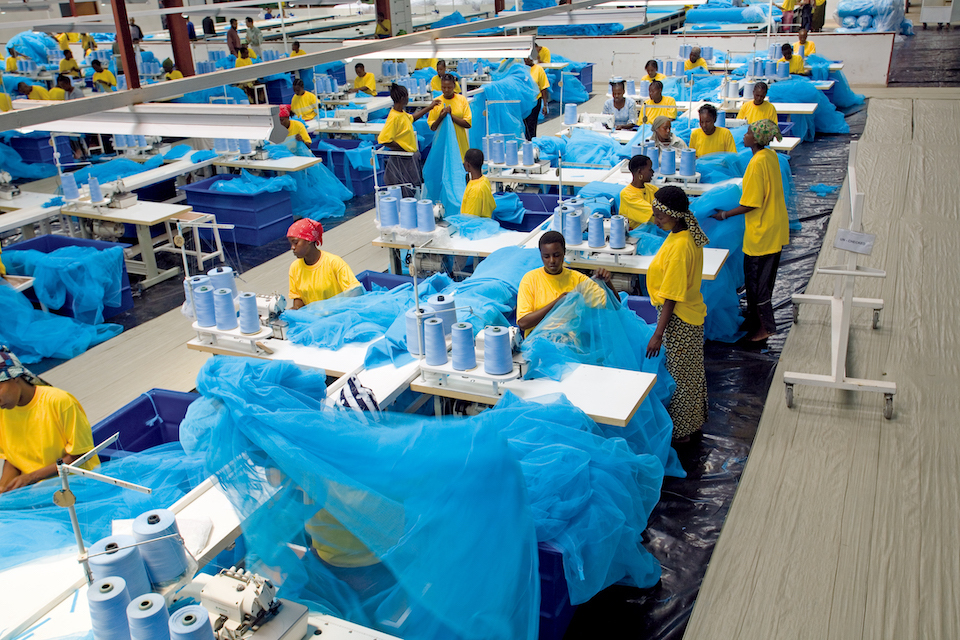Data from WHO show that malaria infected 216 million people in 91 nations and regions in 2016, with 445,000 deaths.[1] Aiming to eradicate the “devil’s disease,” Sumitomo Chemical Co., Ltd. of Japan offers an “insect-proof mosquito net.”

Teaching Ethiopian children how to use OlysetTM Nets. Hirooka says, “It’s essential to instruct children properly: ‘When you tuck yourself into bed, make sure you’re completely surrounded by the net.’”

An insecticide-treated mosquito net can save the lives of young children, and bring peace of mind to their mothers.
The vivid blue mosquito net is called “OlysetTM Net.” Created in 1994 by Sumitomo Chemical Co., Ltd., it is the world’s first mosquito net in which an insecticide is incorporated into threads made of polyethylene resin. Atsuko Hirooka, the executive officer who heads the vector control business in the company’s Environmental Health Division, says, “Malaria can be prevented by a modern lifestyle. Anopheles, mosquitoes the malaria disease vector, are active at night, so encounters can be avoided by sleeping in a tightly-built house that is difficult for them to enter. Also, if an insecticide is used, many mosquitoes that manage to come inside can be eliminated.”
However, that lifestyle is beyond the reach of many people. One solution is an insecticide-treated mosquito net, which gives maximum benefit for a minimal investment. The OlysetTM Net is the first to incorporate an active agent, which persists for at least three years, and that has now become the mainstream approach. As design considerations, the net must be comfortable for humans to use every day, having good air permeability. For that reason, OlysetTM Net has a wide mesh but does not allow mosquitoes to pass through due to the effect of the insecticide, which also provides knockdown and repellency effects. In addition, OlysetTM Net is especially designed to make the insecticidal effect persist through repeated wash cycles. Such a net will keep people safe, and even children under five years of age, who have a particularly high risk of dying from malaria in homes with open doors or windows, are safe as long as they remain inside the net.


“Rather than giving a person a fish, teach him how to fish.” The decision to supply the royalty-free technology to a local business in the United Republic of Tanzania was made promptly. This has become an important step in addressing Africa's economic burden from malaria, estimated to be 12 billion dollars annually. [2]






























